- Clone
- IG191E/A8 (See other available formats)
- Regulatory Status
- RUO
- Other Names
- B-cell lymphoma 6, BCL-5, LAZ3, BCL6A, ZNF51, ZBTB27
- Isotype
- Mouse IgG1
- Ave. Rating
- Submit a Review
- Product Citations
- 6 publications

| Cat # | Size | Price | Save |
|---|---|---|---|
| 648303 | 25 tests | ¥33,660 | |
| 648304 | 100 tests | ¥87,120 |
B-cell lymphoma 6 (Bcl-6), is an 80 kD homodimer and member of the BTB-POZ zinc finger family. It consists of one BTB (POZ) domain and six C2H2-type zinc fingers. Bcl-6 is a transcriptional repressor as well as a master regulator of germinal center reaction. On B cells, Bcl-6 induces proliferation, antibody class switching and affinity maturation, while inhibits its differentiation to plasma cells. On T cells, Bcl-6 induces its differentiation to TFH. This molecule is also expressed in some B cell lymphomas and breast cancer cells.
Product DetailsProduct Details
- Verified Reactivity
- Human, Mouse
- Antibody Type
- Monoclonal
- Host Species
- Mouse
- Immunogen
- Plasmid vector containing cDNA of the Bcl-6 gene
- Formulation
- Phosphate-buffered solution, pH 7.2, containing 0.09% sodium azide and BSA (origin USA)
- Preparation
- The antibody was purified by affinity chromatography and conjugated with PE under optimal conditions.
- Concentration
- Lot-specific (to obtain lot-specific concentration and expiration, please enter the lot number in our Certificate of Analysis online tool.)
- Storage & Handling
- The antibody solution should be stored undiluted between 2°C and 8°C, and protected from prolonged exposure to light. Do not freeze.
- Application
-
ICFC - Quality tested
- Recommended Usage
-
Each lot of this antibody is quality control tested by intracellular immunofluorescent staining with flow cytometric analysis. For flow cytometric staining, the suggested use of this reagent is 5 µl per million cells in 100 µl staining volume or 5 µl per 100 µl of whole blood.
- Excitation Laser
-
Blue Laser (488 nm)
Green Laser (532 nm)/Yellow-Green Laser (561 nm)
- Application Notes
-
This clone is also known as GI191E/A8. Additional reported applications (for the relevant formats) include: immunohistochemical staining of formalin fixed, paraffin embedded tissue sections1, Western blotting1, and immunoprecipitation1.
-
Application References
(PubMed link indicates BioLegend citation) -
- Garcfa JF, et al. 2006. J. Histochem Cytochem. 54:31.
- Product Citations
-
- RRID
-
AB_2561375 (BioLegend Cat. No. 648303)
AB_2561375 (BioLegend Cat. No. 648304)
Antigen Details
- Structure
- Member of the BTB-POZ zinc finger family, 80 kD, homodimer, 1 BTB (POZ) domain, 6 C2H2-type zinc fingers
- Distribution
-
Germinal center B cells, follicular helper T cells (TFH), B cell lymphomas, breast cancer cells
- Function
- Transcription factor, master regulator of germinal center reaction
- Interaction
- BLIMP-1
- Cell Type
- B cells, Tfh
- Biology Area
- Cell Biology, Immunology, Transcription Factors
- Molecular Family
- Nuclear Markers
- Antigen References
-
1. Ye BH, et al. 1993. Science 262:747.
2. Baron BW, et al. 1993. P. Natl. Acad. Sci. USA 90:5262.
3. Onizuka T, et al. 1995. Blood 86:28.
4. Johnston RJ, et al. 2009. Science 325:1006.
5. Kitano M, et al. 2011. Immunity 34:961.
6. Baumjohann D, et al. 2011. J. Immunol. 187:2089.
7. Tran TH, et al. 2010. Cancer Res. 70:1711. - Gene ID
- 604 View all products for this Gene ID 12053 View all products for this Gene ID
- UniProt
- View information about Bcl-6 on UniProt.org
Related Pages & Pathways
Pages
Related FAQs
- What type of PE do you use in your conjugates?
- We use R-PE in our conjugates.
Other Formats
View All Bcl-6 Reagents Request Custom Conjugation| Description | Clone | Applications |
|---|---|---|
| Purified anti-mouse/human Bcl-6 | IG191E/A8 | WB,ChIP,IHC-P,IP,SB |
| PE anti-mouse/human Bcl-6 | IG191E/A8 | ICFC |
| Alexa Fluor® 647 anti-mouse/human Bcl-6 | IG191E/A8 | ICFC |
| Alexa Fluor® 594 anti-mouse/human Bcl-6 | IG191E/A8 | IHC-P |
Customers Also Purchased
Compare Data Across All Formats
This data display is provided for general comparisons between formats.
Your actual data may vary due to variations in samples, target cells, instruments and their settings, staining conditions, and other factors.
If you need assistance with selecting the best format contact our expert technical support team.
-
Purified anti-mouse/human Bcl-6
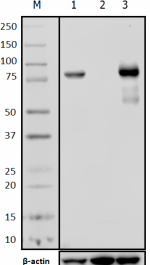
Total lysates (15 µg protein) from Raji (lane1), HeLa (lane ... 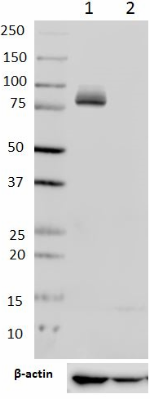
Total cell lysates (15 µg protein) from Raji (lane 1) and He... 
Chromatin Immunoprecipitations (ChIP) were performed with cr... 
SeqIF™ (sequential immunofluorescence) staining on COMET™ of... -
PE anti-mouse/human Bcl-6

Lymph node cells from a C57BL/6 mouse, at day 12, post-immun... 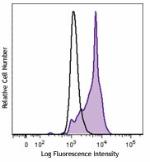
Overlay between germinal center (IgD-/Fas+ -
Alexa Fluor® 647 anti-mouse/human Bcl-6

C57BL/6 lymph node cells were immunized with CFA for 12 days... -
Alexa Fluor® 594 anti-mouse/human Bcl-6
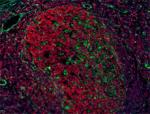
Human paraffin-embedded tonsil tissue slices were prepared w...













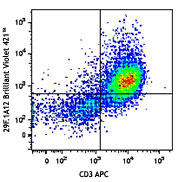

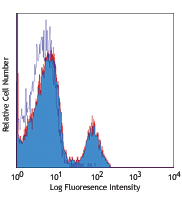
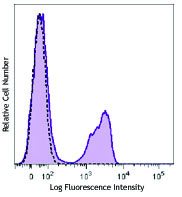



Follow Us